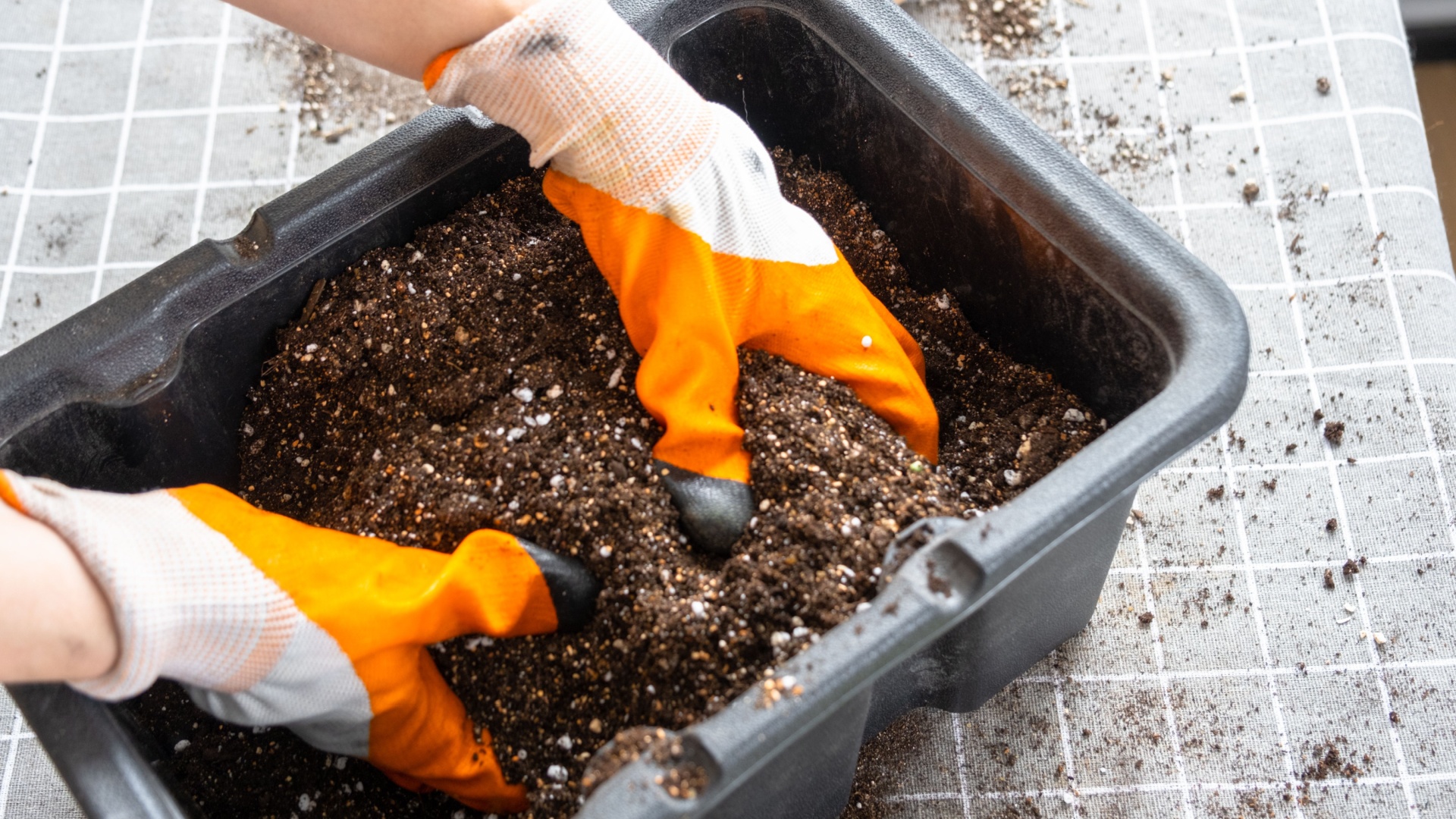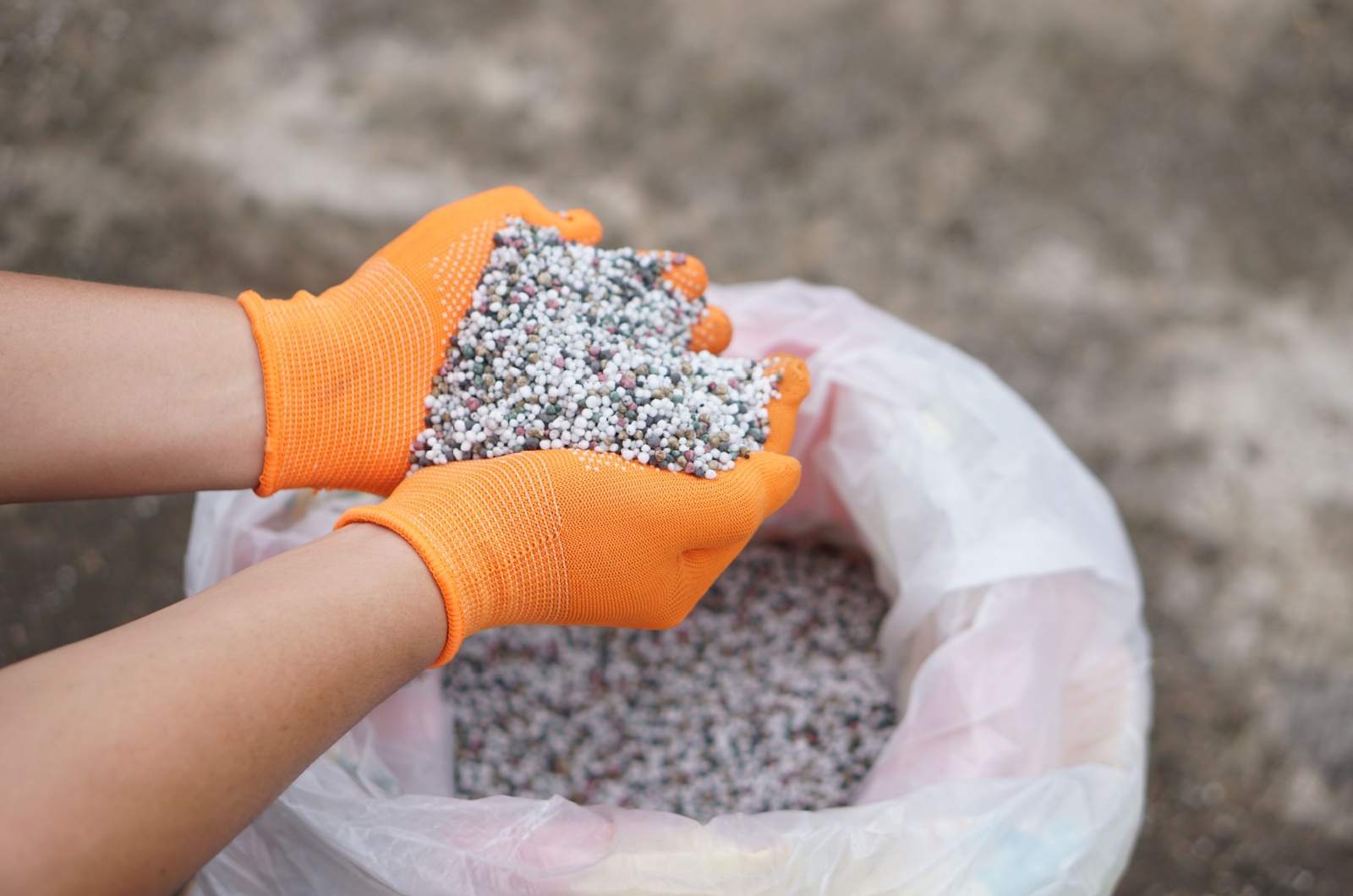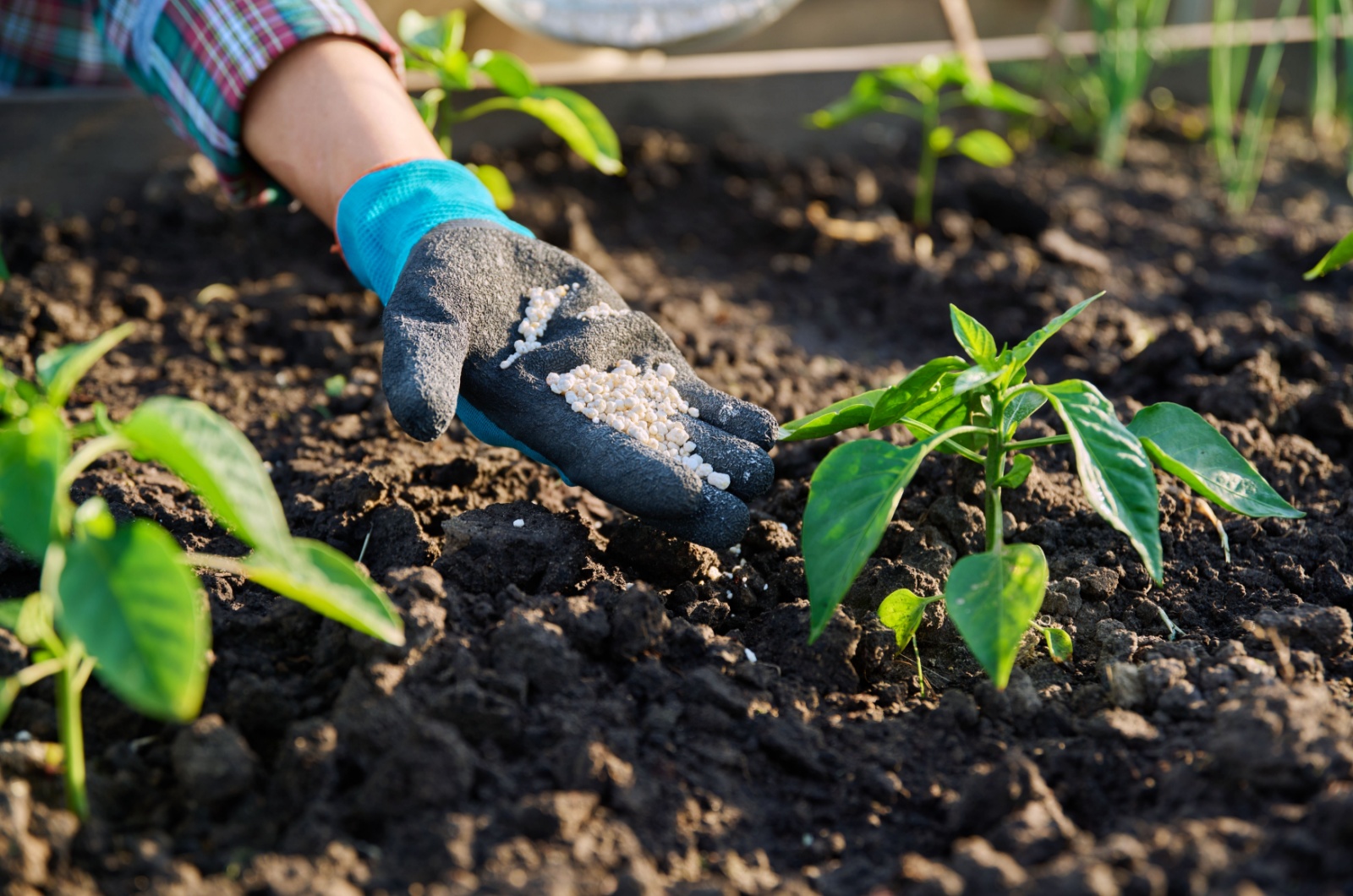When I first started growing plants in containers, I thought, “How hard could it be?” Just put them in a cute pot, water occasionally, and let nature do the rest, right?
Well, my plants had other ideas.
They went from looking bright and lively to droopy and dull in no time… the worst thing is, I had no clue what was going on!
What I didn’t take into consideration (cut me some slack, I was a beginner) is that plants need more than just water – they need food as well.
Knowing how to fertilize container plants is crucial. Flowers, crops, shrubs, bulbs, and trees all need that extra nutrient boost when grown in containers (yep, all of them!).
The secret to proper fertilization lies in correct timing and choosing the right fertilizer. That’s exactly what we’re going to cover here, so stay tuned!
Know Your Fertilizers
Fertilizers come in two main flavors:
• Organic (from natural or once-living sources like fish, seaweed, or bone meal)
• Inorganic (made in a lab or chemically processed)
Deciding which to use is all about preference, but there are some differences. Inorganic fertilizers tend to give plants a fast nutrient boost, but they don’t do much for long-term soil health.
Organic options, on the other hand, like to take their sweet time but they also build up beneficial soil bacteria and promote overall soil health.
The magic behind all fertilizers lies in three essential elements: nitrogen (N), phosphorus (P), and potassium (K). These nutrients are important for plant growth and getting the right balance can make all the difference.
A general all-purpose fertilizer usually provides an even mix of all three, plus a few trace elements for good measure.
However, you can pick some of these common types of fertilizers to treat your container plants.
1. Liquid fertilizer – this is my go-to when I need a quick nutrient boost. Just dilute it in water, pour it into a watering can, and give your plants a drink. You can use this method every two weeks, and it doubles as watering.
2. Dry fertilizer – in granular form, this type is a little direct attention. Sprinkle a small amount onto the soil and water it in. It’s super easy, just make sure you don’t overdo it.
3. Slow-release fertilizer – this is a dry feed that releases nutrients slowly over time (usually about three months). Just mix it into the soil when you’re planting or repotting, or sprinkle a bit on top and work it into the soil. Then, just water, sit back, and relax while your plants are snacking.
Also read: What Is 14 14 14 Fertilizer And How To Use It
Container Bulbs, Flowers, Crops, And Trees Are All Fertilized Differently
When it comes to fertilizing container plants, there’s a bit of finesse required.
You can’t just throw any old fertilizer at your plants and hope for the best. Nope, you’ve got to tailor it to what you’re growing.
No matter if you are growing blooms, bulbs, crops, trees, or shrubs, each has its own set of nutrients needed to thrive in a pot.
So, let’s start one by one!
Container Blooms:
• Balanced liquid feeds – flowering and fruiting plants need special attention. I like to use a potassium-rich liquid fertilizer every two weeks. Perfect for annuals or short-lived flowers, this helps with flower bud development.
• Slow-release granular feed – for perennials or long-lasting floral displays, slow-release fertilizers are the best option. Incorporating them into the soil at planting time ensures a steady stream of nutrients.
Related: Use These 3 Fertilizers To Make Your Flowers Flourish Like Never Before
Container Bulbs:
• Phosphorus-rich fertilizers – if you’re planting fresh bulbs, give them a head start by adding a phosphorus-rich granular feed like organic bone meal (a personal favorite of mine). Just be sure to add a thin layer of soil on top to protect them from potential “fertilizer burn“.
• Keep those leaves – this is a quick tip not to trim the leaves off your bulbs too early. They need to die back naturally to replenish nutrients for the next blooming season. It’s tempting, I know, but stay patient and enjoy an abundance of blooms next year!
Related: 17 17 17 Fertilizer: Everything You Need To Know
Container Crops:
• High-nitrogen feeds – if you’re growing veggies or leafy greens, you’re in for a treat… but please be aware that they are heavy feeders! Early on, use a high-nitrogen fertilizer to encourage leaf growth, but stop by late June to avoid fungal issues.
• Potassium boost – switch to a potassium-rich fertilizer (like tomato feed) from late spring to summer for fruiting plants. This is the secret ingredient for getting those juicy tomatoes or crisp peppers.
Container Shrubs And Trees:
• Slow-release fertilizer – no matter if it’s a bare-root tree or a potted shrub, check your potting mix! If it’s not already loaded with slow-release fertilizer, be sure to add some. I always mix it well before placing the roots in the pot to make sure they have easy access to nutrients.
• Fruit trees need special attention – keep an eye on fruit trees in pots, especially in spring and summer. They need regular feeding and watering, or you risk losing blossoms. A specialized fruit tree fertilizer once a week should be enough.
• Citrus feeding schedule – these trees are particular about their feeding. They thrive on low-nitrogen fertilizer about three times a year (February, May, and October), so you can set a reminder on your phone and give them a good feed with a 2-1-1 slow-release formula.
Each plant in your container garden has its own personality when it comes to feeding. Get the timing and the type of fertilizer right, and your plants will thank you with healthy growth, cheerful blooms, and bountiful harvests!



